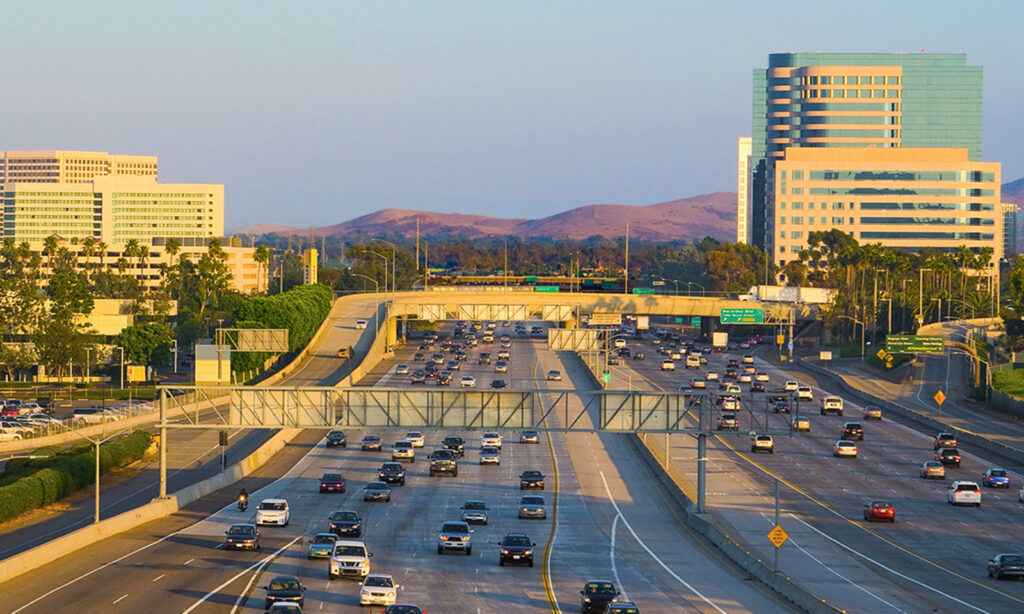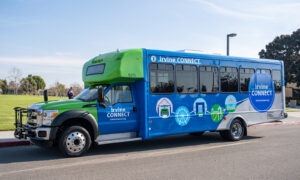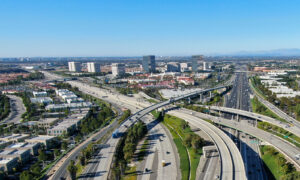Across Orange County, several major projects aimed at easing traffic congestion and better connecting communities are underway – with some nearing completion.
There are more than $4 billion in transportation improvements currently happening in the region, which Orange County Transportation Authority officials say is the most in the agency’s history. The work is possible thanks in large part to the voter-approved Measure M half‑cent sales tax.
Here’s a look at the projects that will help you get from OC to Los Angeles, San Diego, or over to the mountains in less time.
Going north: I-405 and the 55 freeway
The cornerstone to the updates is one of the most significant infrastructure improvement projects in recent California history. The $2.1 billion I-405 Improvement Project will result in improvements being made to a 16-mile stretch of I-405 between the 73 freeway in Costa Mesa and the L.A. County border.
The project, which began in 2018 and will be completed this year, includes reconstructing 18 bridges that span the freeway and making improvements to local streets and freeway ramps. One regular lane in each direction will be added along with a second lane in each direction that will combine with existing carpool lanes to form Express Lanes.
The new Express Lanes will require motorists to have FasTrak transponders and pay electronic tolls that will be adjusted based on time of day and traffic volume. Clean-air vehicles will be permitted to use the Express Lanes at a discount. Motorcycles will travel for free.
Much like the 91 Express Lanes, they will allow drivers to pay for access and avoid traffic.
OCTA says the toll lanes are designed to keep a free flow of traffic, which should take about 16 minutes to traverse the stretch that now can take 30 minutes or more.
“The project removes drivers from the regular lanes of traffic, gives carpools free travel options, and we expect there will be significant improvement in congestion,” says OCTA CEO Darrell Johnson.
“The improvements will increase access to job centers, health care and educational facilities, and John Wayne Airport, among other important destinations.” – Darrell Johnson, OCTA
Along the 55 freeway, a regular lane and a carpool lane in each direction will be added between I-5 in Tustin and I-405 near the border of Costa Mesa and Irvine. The project also includes adding auxiliary lanes to help traffic smoothly enter and exit the freeway. Construction is expected to be completed by 2026.
“The improvements will increase access to job centers, health care and educational facilities, and John Wayne Airport, among other important destinations,” Johnson says.
Going south: I-5
Construction crews are also working on I-5 in south Orange County, adding a regular lane in both directions between Avery and Alicia parkways and extending the second carpool lane from Alicia Parkway to El Toro Road.
Along with new freeway lanes, the project includes improved ramps, new lighting and signage, along with bike lanes and sidewalks. Work is expected to finish in 2024.
Future work along I-5 through Tustin and Irvine includes adding lanes in each direction between Yale Avenue in Irvine and the 55 freeway.
The project is expected to cost $430.9 million and will be completed in two phases, starting in 2026 and concluding in 2029.
Going east: 241 toll road and the 91 freeway connector
On Orange County’s eastern edge, a project creating a new bridge between the 241 toll road and the 91 freeway will provide a seamless transition and improve travel times between the tolled facilities.
The 241/91 Express Connector will include a 7-mile stretch connecting the northbound 241 toll road to the eastbound 91 Express Lanes, and the westbound 91 Express Lanes to the southbound 241 toll road. A FasTrak transponder will be required on the connector, and tolls will be collected electronically.
The Transportation Corridor Agency, which is leading the project, says the work will also improve traffic flow on the 91 general purpose lanes by reducing the number of cars weaving across to access the 91 Express Lanes.
Construction on the $423 million project is scheduled to begin next year and be completed by 2027.









